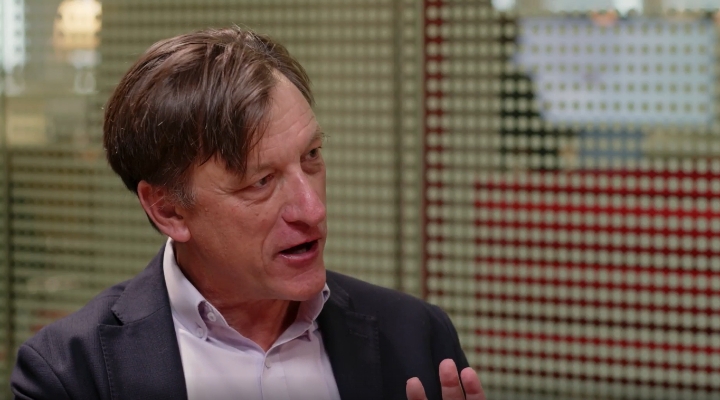
Fees are particularly important to consider for fixed-income funds. With yields near historic lows across bond markets, fees have eaten up an even larger share of funds’ returns, leaving less for fund investors to pocket. It’s no surprise that in this context, investors have increasingly turned to the expanding menu of low cost passive index and exchange-traded funds for their bond exposure.
A recent study published by Morningstar finds that, in many bond categories, it is preferable to choose a low-cost passive option, but there are also areas in which investors have reasonably good odds of selecting an active bond fund that’s capable of beating its benchmark after fees.
The study examined historical return distributions in 25 Morningstar Fixed-Income categories for funds domiciled in the US as well as Europe, Asia and Africa. While recent low yields have compressed returns, it would be too restrictive to look at recent returns only. Instead, we analysed performance over rolling 3-year periods from January 2002 to October 2017.
Fees Cast a Large Shadow Over Performance
Although there is some variation amongst categories, the general observation is that fees are the largest driver behind most bond funds’ chronic underperformance against their indexes. This becomes evident when comparing gross of fees excess returns and net of fees excess returns of funds against a representative market index as and an ETF.
We found that in 13 out of the 25 categories, the median fund typically outperformed its category’s index on a gross of fees basis, suggesting that at least in some cases active management has added value. However, once fees are factored in, odds of outperformance drop dramatically. In fact, in none of the 25 categories studied did the median fund beat the category benchmark after fees.
But even these numbers slightly overstate the actual returns that investors can realistically achieve, as funds can be liquidated or merged during the observation period, a major phenomenon in Europe. For example, only 61% of the funds that were included in Morningstar’s GBP Government Bond category in October 2012 were still on the market in October 2017.
Investors’ actual experience is better reflected by success ratios, which measure the percentage of funds having both survived and outperformed the category index in a given period. Success ratios for categories in our study ranged from 9% to 49%, with some of the lower success ratios being found in high yield and emerging market bond categories.
Where Do Fees Have the Biggest Impact?
On a more granular level, we have identified a subset of categories in which costs have, on balance, a greater impact on net returns than does manager skill, making the case for low-cost passive investments. These are mostly investment-grade government or diversified bond peer groups, where returns are lower and there is comparatively little dispersion between the best and the worst active funds.
In more diverse peer groups, a low-cost passive option is often superior to the typical active fund, but there is still room for manager skill to add value – if fees are reasonable. For example, in Morningstar’s global bond category for European-domiciled funds, the median active fund fails to impress, but top-quintile active funds have delivered much more encouraging results, typically outperforming the Bloomberg Barclays Global Aggregate Bond index by more than 100 basis points annualized net of fees. However, such results should be taken with a grain of salt. These assume that the investor had the foresight to select funds that landed in the best quintile of their categories in each rolling three-year period – a daunting task given the rare persistence of outperformance for individual funds through time.
There’s another caveat, as well. Many funds in the global bond category have gained an edge over the index by taking more risk, whether via larger-than-index allocations to investment-grade corporates, or through modest out-of-benchmark exposures to high-yield corporates or emerging-markets debt. As a result, some of these funds have struggled during periods of credit stress while the benchmark has thrived. Thus when choosing an active manager for global bonds, it’s important to weigh the risks of its approach against the potential long-term rewards.
Sometimes Both Active and Passive Fall Short
In universes where volatility and transaction costs are high, both active and passive funds struggle to keep up with the index. Within high yield bonds, passive funds-- which typically focus on the largest, most-liquid issuers--have missed out on a large portion of the benchmark’s returns. Active managers, meanwhile, are somewhat better armed to exploit the market’s inefficiencies and illiquidity premiums.
Thus, even if it fails to beat the benchmark index, the typical high yield active fund is still preferable to a passive vehicle. Still, the dispersion of returns around the median has been high in these categories, and mistakes can be costly, so investors still need to exercise extreme vigilance when choosing any individual active bond fund.
Within emerging-market bonds, the performance pattern of active bond funds versus the index has been more mixed. During severe market corrections, such as in 2008, active funds were better able to protect investors’ capital by raising cash or tilting even a small part of their portfolio towards “safe-haven” bonds. However, outside of those periods, and over the long term, most emergent-market bond funds have lagged their index, even before fees.
Compared to a representative ETF most active bond funds, particularly in Europe, are simply too expensive to succeed. Even funds in the top quartile of these categories have underperformed the ETF after fees, suggesting that passive offerings are relatively more compelling even if they are not able to exactly match the index’s returns.
A version of this article appeared in FT Adviser magazine




























